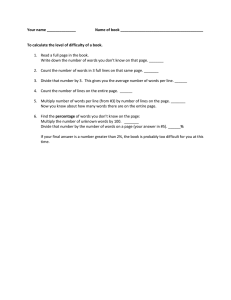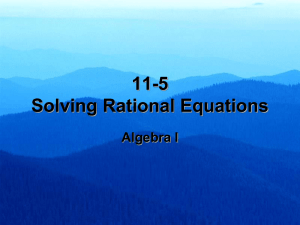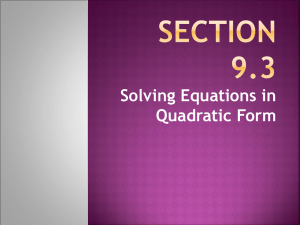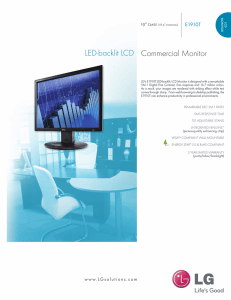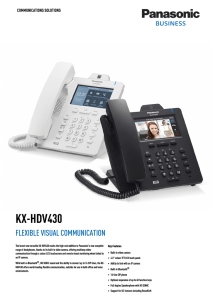Section 4.4– Number 5 A wave of wavelength λ traveling in deep
advertisement
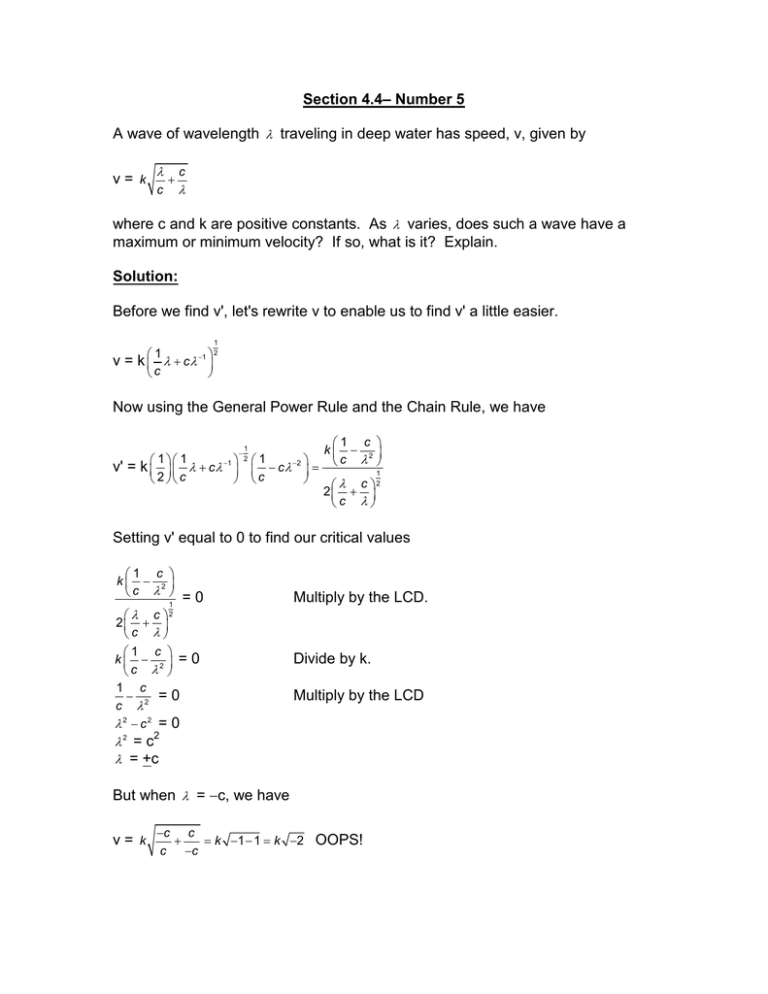
Section 4.4– Number 5 A wave of wavelength λ traveling in deep water has speed, v, given by v= k λ c + c λ where c and k are positive constants. As λ varies, does such a wave have a maximum or minimum velocity? If so, what is it? Explain. Solution: Before we find v', let's rewrite v to enable us to find v' a little easier. 1 2 1 v = k λ + c λ −1 c Now using the General Power Rule and the Chain Rule, we have 1 1 −1 v' = k λ + c λ 2 c − 1 2 1 c k − 2 1 c λ −2 c − cλ = 1 λ c 2 2 + c λ Setting v' equal to 0 to find our critical values 1 c k − 2 c λ = 0 1 λ c 2 2 + c λ 1 c k − 2 = 0 c λ 1 c − =0 c λ2 λ2 − c2 = 0 2 λ2 = c Multiply by the LCD. Divide by k. Multiply by the LCD λ = +c But when λ = −c, we have v= k −c c + = k −1 − 1 = k −2 c −c OOPS! So λ = c. But is it a maximum or a minimum? We will use the 1st Derivative test because, quite frankly, v'' is not going to be easy. 1 2 Since λ = c is our critical value, we will examine λ = c and λ = 2c to determine where v' is positive (v increasing) and negative (v decreasing). 1 c k − 2 c c 1 4 = v c = 1 2 c 2 c 2 2 + c c 2 1 c k − c ( 2c )2 v(2c) = 1 4 3 k − k − c c = c 1 1 1 2 5 2 2 + 2 2 2 2 < 0 and so v is decreasing. c 1 4 1 3 k − 2 k k − 4c c c 4c c = = = 1 > 0 and so v is increasing. 1 1 1 1 2 2c c 2 5 2 5 2 2 + 2 2 + 2 2 2 c 2c 2 2 Therefore, at λ = c, v is a minimum.

